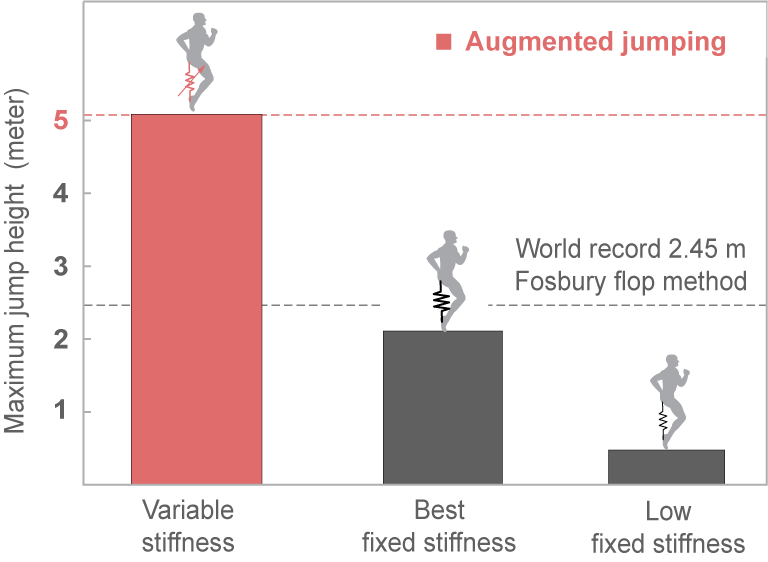A. Sutrisno and D.J. Braun, Enhancing Mobility with Quasi-passive Variable Stiffness Exoskeletons, IEEE Transactions on Neural Systems & Rehabilitation Engineering, vol. 27, no. 3, pp. 487-496, 2019. Highlighted research by IEEE Transactions on Neural Systems & Rehabilitation Engineering.
Shoes were invented to provide user comfort using rubber soles, despite marginal improvement in human mobility. Unlike shoes, current lower-limb exoskeletons use fixed stiffness springs to store and recycle energy to improve mobility. However, the maximum kinetic energy a human can accumulate when augmented with a fixed stiffness spring is limited by the maximum deflection and the ability of the limbs to generate force; tying the advantage of fixed stiffness exoskeletons to biological constraints. Here, we propose a method for improving mobility using quasi-passive variable stiffness spring exoskeletons, where the maximum kinetic energy accumulated by a human is independent of the limb deflection and the ability of the limb to generate force. This is achieved by a variable stiffness augmentation of the human, where the exoskeleton does not provide mechanical work. The theoretical advantage provided by this new augmentation method can be useful in demanding tasks, where humans could benefit from increased speed and reduced energy cost of motion.

